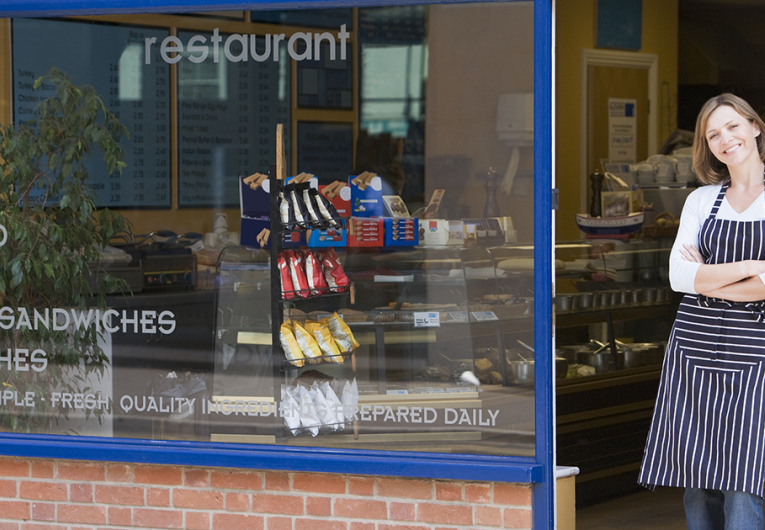
What is a Micro-Influencer?
Influence marketing has proven uber-successful for hundreds of companies -- used by some of the world’s biggest brands as a social media strategy to help promote their products and services. But with high-profile influencers come high fees, leaving the marketing strategy seemingly out of reach for smaller businesses.
That is until the success of “micro-influencers.”
They’re the influencers whose followings number in the thousands vs. the millions (boasted by the more popular social media influencers).
The micro-influencer movement opens up opportunities for companies of all sizes to incorporate influencer marketing into their campaigns but even more so for smaller businesses that can’t afford top-tier influencers to promote their products.
The Power of Micro-Influencers
Influencer marketing experts have differing numbers when defining micro-influencers -- some put a micro-influencer’s social media following at between 1,000 and 10,000.
Scrunch, an influencer platform and data agency based in Australia, expands that range a bit, describing a micro-influencer as “someone who has between 2,000 and 50,000 followers on a particular social media channel, usually comprised of a focused passion, topic or niche market.”
But it’s the micro-influencer’s focus on a topic or in a niche market that everyone does agree is important -- a key reason for their success advocating for your company’s brand. They’re in every industry or topic, offering companies an opening into their specific audiences. (A recent AdWeek headline calls micro-influencers the “new gatekeepers of social media.”)
Data shows that despite the smaller followings, micro-influencers can get your company and products in front of a targeted and engaged audience and will drive sales and brand awareness just like their mega influencer counterparts.
And, the use of micro-influencers is not only drumming up sales, it’s also proven a cost-effective addition to social media marketing strategies. Hello Society, an influencer marketing group bought in 2016 by The New York Times, says marketing campaigns using micro-influencers are more cost effective and 6.7 times more efficient than those relying on influencers with larger followings.
Evolution of Influencer Marketing
Like other social media marketing, influencer marketing is based on the opportunities within the sheer numbers of people engaging on social media. With the seemingly endless opportunities to influence -- or become a social media influencer -- it’s become its own marketing niche.
Social Blade, which compiles data from YouTube, Twitter, Twitch, Daily Motion, Mixer, and Instagram, puts the top 50 Instagram influencers as having more than 3.1 billion followers.
Another tier of influencers are the macro-influencers. A macro-influencer is described by Scrunch as a mid-tier influencer on one or two key digital platforms. Based on an analysis of 6.3 million social media accounts, the agency estimates a macro-influencer on Instagram has between 133,000 and 1,800,000 followers.
Beyond the numbers though, what influencers really offer is their built-in, ready-for-content audience and the trust they’ve established with their followers. And as influencer marketing has evolved, brands have become more aware of the impact of an influencer’s engagement -- the area where a micro-influencer can shine.
Finding a Micro-Influencer for Your Business
There are agencies that specialize in identifying and matching the best micro-influencers to your company (with platforms, data-tracking services, etc.). But if you’re interested in doing some searching on your own, the best place to start might be in your own customer base.
“The best types of influencers are those who are already fans of your brand,” writes Sidney Pierucci on The Startup, Medium’s entrepreneurship publication. “When they promote products or services from your brand, it’s more trustworthy because their followers know that the influencer already loves your products.”
What you’re looking for is a micro-influencer with the ability to engage with their followers but also, make sure it’s the right audience, your audience.
Scrunch, which helps brands and agencies find the right influencers for their campaigns and works with influencers to build their businesses, says finding the right influencer for your company has a lot to do with how well you know your company and specifically the audience you’re trying to reach.
“You don’t need a million followers to be influential, but you do need to understand what makes your customers tick.”
Influencers are running a business too, and once established can be choosy on the partnerships they take on. That’s why finding someone who’s already a good fit for your company can be helpful. Fees in influencer marketing are typically based on the number of followers (by tier), type of content and per post.
Influencer blogs are priced by monthly impressions. An influencer with a 500,000-plus monthly blog impression will cost a company between $1,000 and $5,000 per post, while a micro-influencer may charge $50 per post.
The trends, insights, and solutions you need to grow your business.
By signing up, you’re subscribing to our monthly email newsletter, The
Wire. You may unsubscribe at any time.
Your information stays safe with us. Learn more about our privacy
policy.











![[#MSP_NAME#] Logo](/themes/sparklight_business/images/transition-logos/migration-banner-logo-[#MSP_CD#].png)
